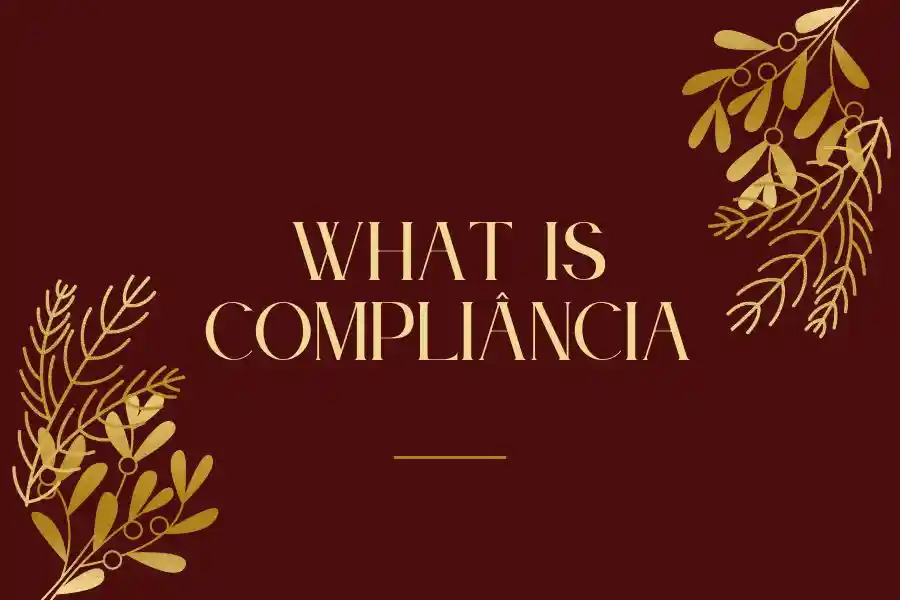Navigating the Landscape of Compliância: A Comprehensive Exploration

Understanding Compliância goes beyond merely acknowledging its existence; it involves a profound grasp of its intricacies and a commitment to weaving it seamlessly into organizational operations. This article aims to delve deeper into the multifaceted realm of Compliância, exploring its significance, core components, challenges, and emerging trends.
Deciphering Compliância: Beyond the Basics
Defining Compliância
Compliância, beyond its literal translation, embodies a commitment to adherence and conformity to a set of rules, policies, standards, or laws. It extends beyond a checkbox exercise, urging organizations to establish and diligently execute procedures and controls. These measures are not just a bureaucratic necessity but a strategic imperative for safeguarding the integrity of business operations and ensuring alignment with industry regulations and legislation.
Key Components of Compliância
Governance: Compliância mandates a meticulous definition of organizational structure, reporting lines, decision-making rights, and accountabilities. Policies and procedures are formulated to guide behavior and business activities, fostering a culture of responsible governance.
Risk Management: The risk landscape is ever-changing, and Compliância necessitates processes for identifying, assessing, and mitigating risks within the organization’s risk appetite. It transforms risk management from a reactive practice to a proactive strategy.
Regulatory Compliance: Striking a delicate balance between rigidity and adaptability, Compliância requires strict adherence to industry laws, regulations, and standards. Organizations must ensure that their activities and controls evolve harmoniously with the ever-shifting regulatory landscape.
Ethics and Integrity: At its core, Compliância is a guardian of ethical conduct. It fosters a culture of integrity and moral values, acting as a bulwark against inappropriate conduct and illegal activities within the organization.
Information Management: The digital age places immense value on data, making effective information management a crucial component of Compliância. This involves policies and processes for safeguarding valuable business assets and protecting sensitive and confidential information.
Why Compliância Matters: Beyond Legal Obligations
Strategic Imperatives of Compliância
Compliância is not a mere checkbox on a legal to-do list but a strategic imperative with far-reaching implications.
Avoiding Legal Penalties and Lawsuits: Non-compliance exposes businesses to substantial fines, legal repercussions, and criminal charges. Lawsuits arising from non-compliance can have severe financial and reputational consequences.
Protecting Customers and Employees: Compliance is not just a legal requirement but a moral duty. It ensures that products, services, and workplace conditions do not harm customers and employees, safeguarding lives and livelihoods.
Maintaining Reputation and Trustworthiness: Compliant companies are responsible, moral, and trustworthy. Conversely, non-compliance can inflict substantial damage to a company’s reputation, brand image, and relationships with stakeholders.
Improving Processes and Efficiency: The pursuit of compliance necessitates activities such as audits, documentation, and corrective actions. These processes ensure adherence to rules and can unveil opportunities for streamlining and enhancing business operations.
In essence, compliance should be an intrinsic component of any business strategy, safeguarding against risks, protecting stakeholders, building and maintaining a positive reputation, and elevating operational efficiency.
Challenges and Evolving Trends in Compliância
Navigating Regulatory Changes
The constant evolution of regulations marks the landscape of Compliância. Regulatory changes, driven by government policies, economic crises, or unforeseen events, demand swift and effective adaptation from organizations. Robust mechanisms for monitoring, interpreting, and implementing these changes are imperative to avoid legal and financial consequences.
Technological Advances and Compliance
Technology, a double-edged sword in the compliance arena, offers advanced tools for management but introduces new challenges. Integrating artificial intelligence (AI) and machine learning for risk assessment, along with blockchain for transparency and security, presents opportunities for efficiency. However, data security and privacy concerns must be carefully navigated to strike a balance.
Compliance in the Digital Age
The digital age necessitates an extension of compliance efforts into the online realm. Cybersecurity, data protection, and the challenges of remote work due to the COVID-19 pandemic pose unique hurdles. However, cloud-based compliance management systems offer opportunities, enabling real-time monitoring and reporting.
Conclusion
Compliância is not a static concept but a dynamic force that demands constant vigilance, adaptation, and innovation. Its significance transcends legal obligations, weaving itself into the strategic fabric of organizations. As we navigate the ever-evolving landscape of regulations and technology, the unwavering commitment to Compliância remains a cornerstone for responsible and sustainable business practices. If you also want to read about Staģes then visit that post.
FAQs
What is Compliância, and why is it essential for businesses?
Compliância refers to compliance with laws, regulations, and standards. Businesses need to ensure that they operate legally and ethically. Non-compliance can lead to legal issues, fines, and damage to a company’s reputation.
How can a company stay compliant with the ever-changing regulatory landscape?
Staying compliant requires regularly monitoring regulatory changes, establishing robust compliance programs, and leveraging technology for efficient compliance management. It also involves training employees to adhere to compliance standards.
What are some common compliance areas that organizations need to address?
Common compliance areas include data privacy (e.g., GDPR), financial regulations (e.g., Sarbanes-Oxley Act), anti-money laundering (AML) laws, environmental regulations, and labor laws. The specific areas depend on the industry and jurisdiction.
How does technology, like AI and blockchain, impact Compliância?
Technology can streamline compliance processes through AI for risk assessment and blockchain for transparency and security. However, it also presents data security and privacy challenges that organizations must address.
What are the consequences of non-compliance with regulations and standards?
Non-compliance can result in legal penalties, fines, reputational damage, loss of business, and, in some cases, criminal charges. It can also lead to losing customer, partner, and stakeholder trust.






